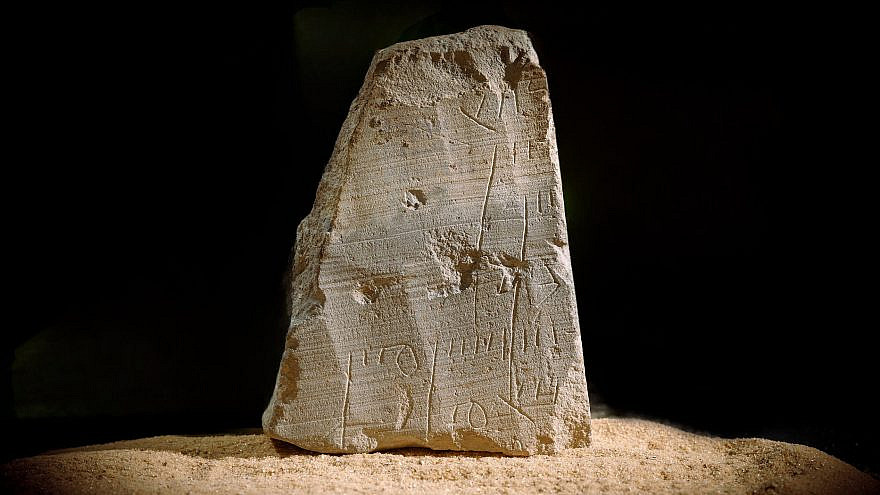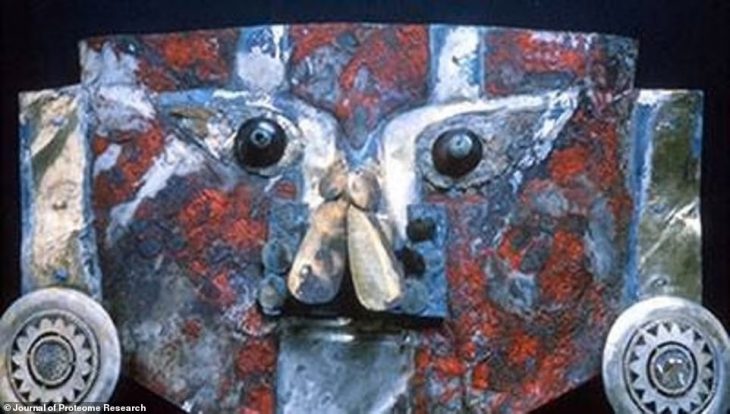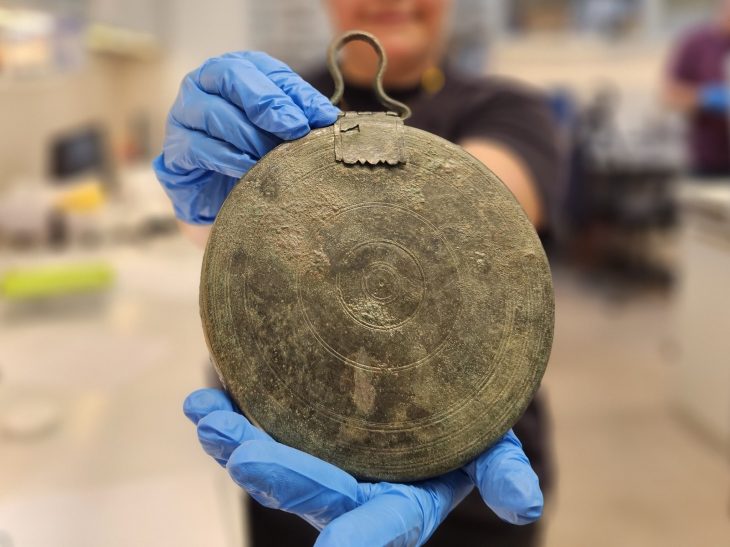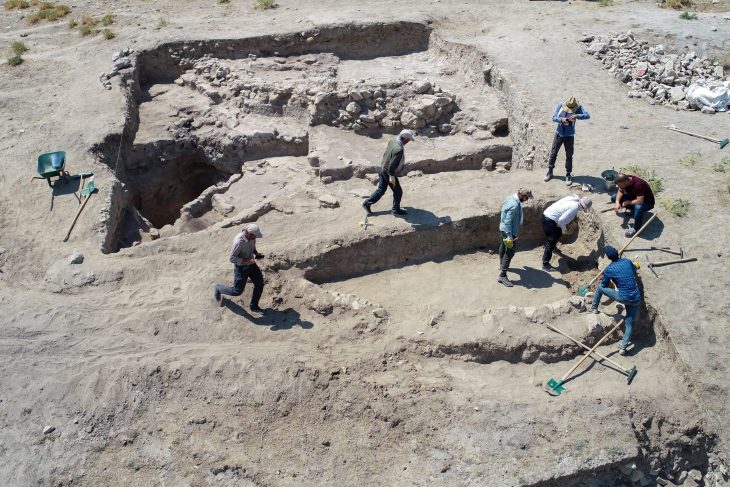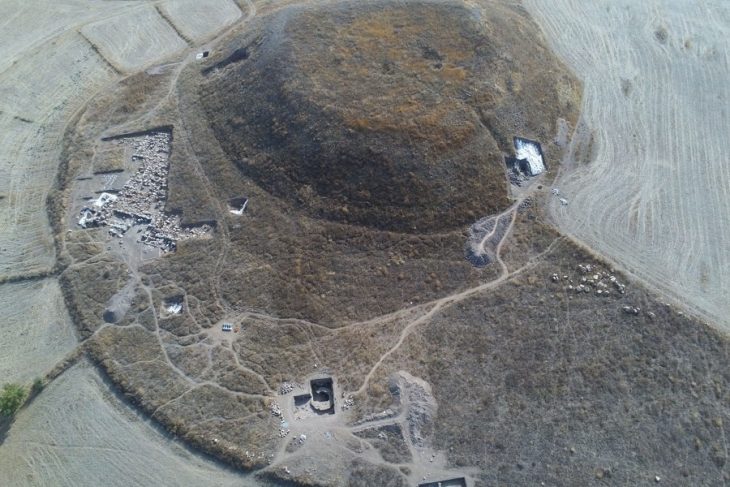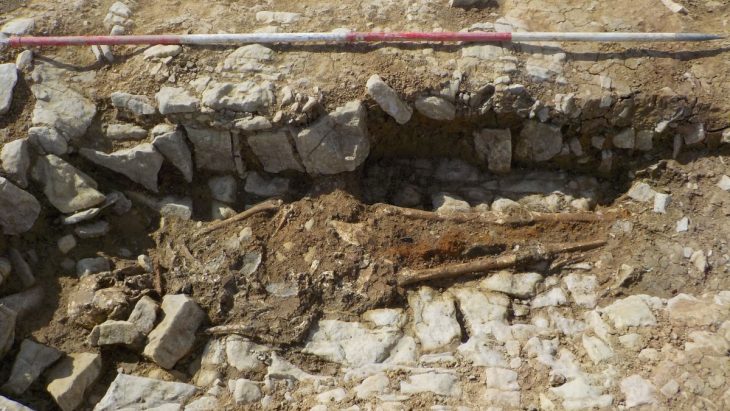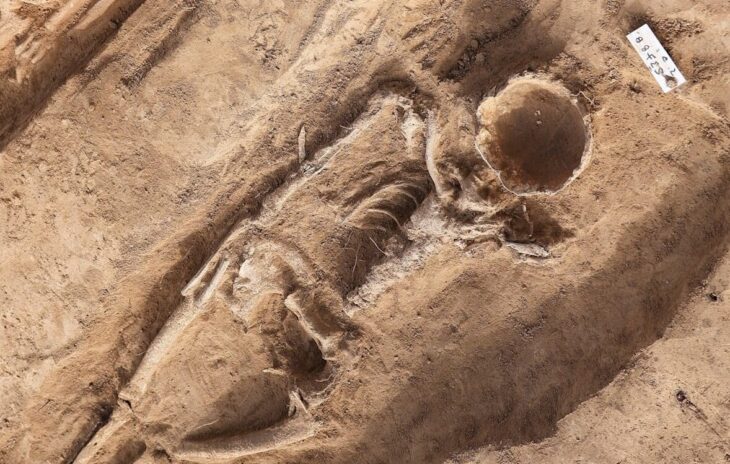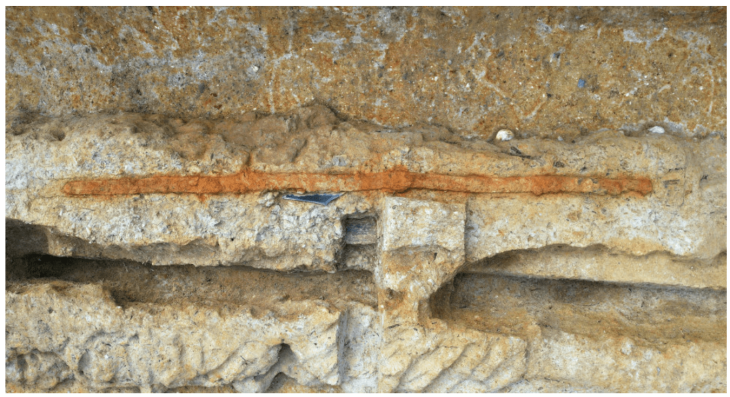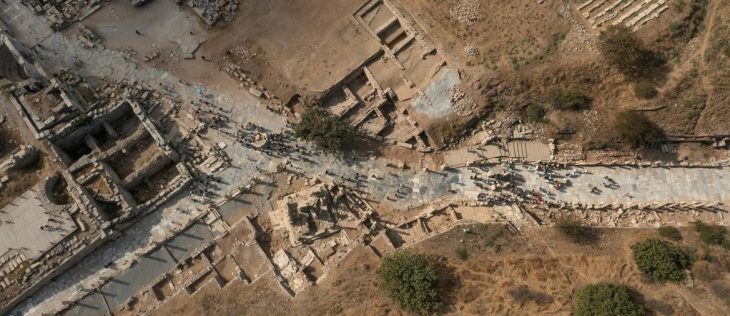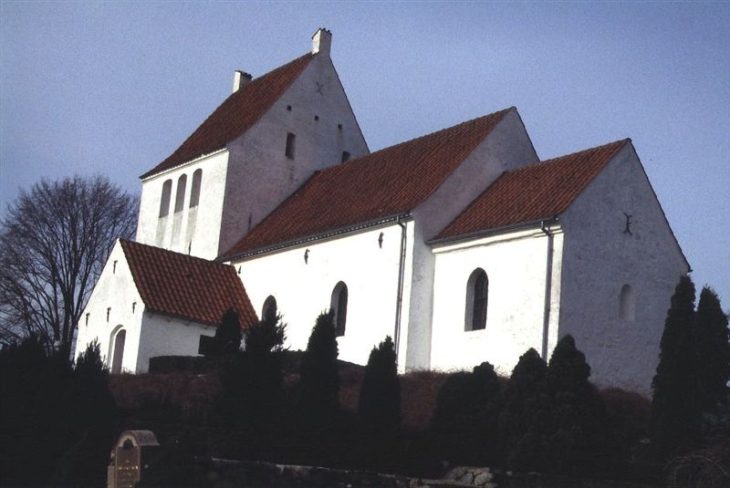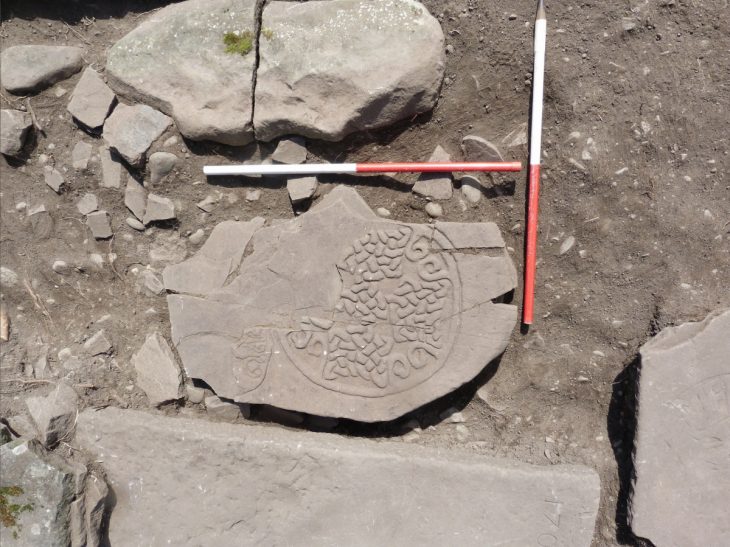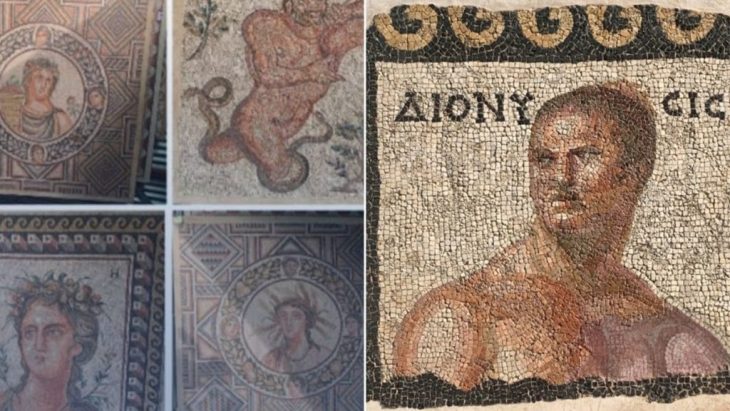A financial record dating back 2,000 years has been unearthed on the Pilgrimage Road in the City of David, Jerusalem’s main street during the Second Temple period, the Israel Antiquities Authority announced on Wednesday.
The discovery sheds light on the commercial activities of the time and provides a rare glimpse into the city’s inhabitants’ daily lives.
The inscription on the small stone tablet found was probably a receipt or a payment instruction recorded by a person engaged in commercial activity during the Second Temple period, the independent governmental archaeological body said.
The find was recently published in Atiqot, a peer-reviewed archaeological journal.
Excavations in the City of David revealed the inscription, which features seven partially preserved lines. The lines include Hebrew names accompanied by letters and numbers. The name ‘Shimon’ appears at the end of one line, followed by the Hebrew letter “mem.” The other lines contain symbols representing numbers, some of which are accompanied by the Hebrew letter “mem” or the letter “resh,” abbreviations for “money” and “quarters,” respectively.
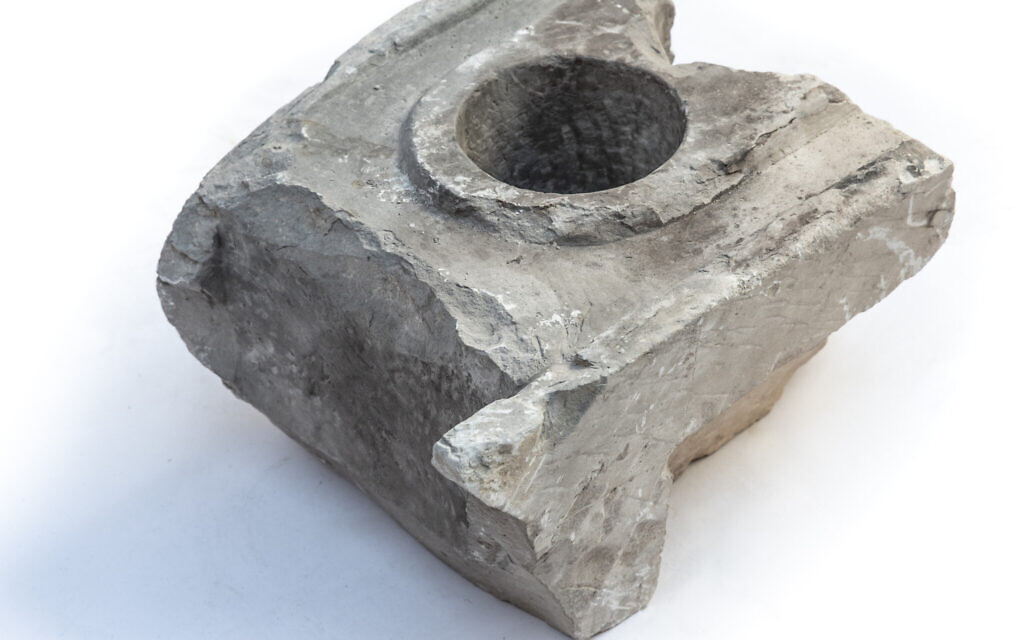
Four similar Hebrew inscriptions have been documented in Jerusalem and Bet Shemesh, all with names and numbers carved on similar stone slabs and dating to the Early Roman period (37 BCE to 70 C.E.), according to the article. This, however, is the first inscription found to date within the boundaries of the city of Jerusalem at that time.
The inscription was carved with a sharp tool onto a chalkstone (qirton) slab, according to the researchers. The stone slab was apparently used as an ossuary (burial chest), which was common in Jerusalem and Judea during the Early Roman period.
While ossuaries are typically found outside the city, their presence within the city suggests the possibility of local artisans or stores trading them as commodities.
The Pilgrimage Road was an ancient, vital thoroughfare that connected the City of David, south of the Temple Mount, to the Second Temple gates. In addition to serving as the primary route for pilgrims, the road also served as a commercial hub.
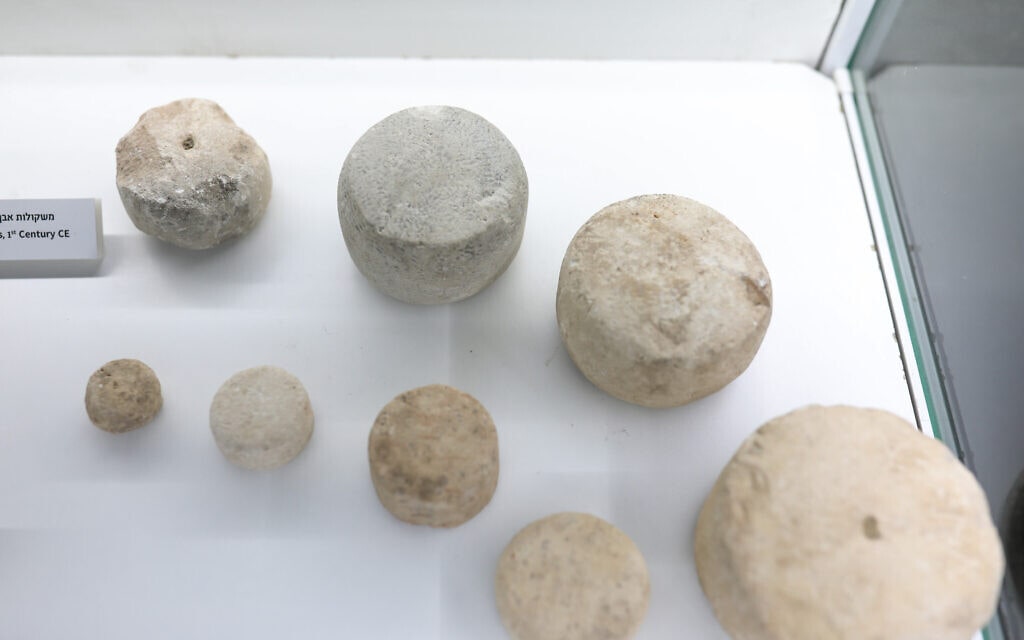
The use of receipts for commercial purposes during that time shows a remarkable similarity to modern practices, the researchers said.
“The remarkable discovery on the Pilgrimage Road in Jerusalem uncovers another aspect of Jewish life in the city from 2,000 years ago. The unique excavations of the Israel Antiquities Authority in the area position the City of David as a pivotal center in the Jewish people’s global historical narrative,” said Rabbi Amichai Eliyahu, Israel’s Minister of Heritage.
Eli Escusido, director of the Antiquities Authority described the Pilgrimage Road excavations as a “flagship project,” saying, “The many discoveries which are being revealed in the excavation shed light on the centrality of this road even during the Second Temple period. With every discovery, our understanding of the area deepens, revealing this street’s pivotal role in the daily lives of Jerusalem’s inhabitants 2,000 years ago.”
The stone tablet on which the inscription was engraved was recovered from a tunnel excavated at the site by British archaeologists Frederick Bliss and Archibald Dickie at the end of the nineteenth century.
Although the inscription was discovered outside of its original archaeological context, the Antiquities Authority said that based on the type of script, the type of stone slab, and its similarity to other contemporary inscriptions, it was possible to date it to the Early Roman period, at the end of the Second Temple period.
Cover Photo: The inscription carrying the financial record. Photo by Eliyahu Yanai/City of David.

